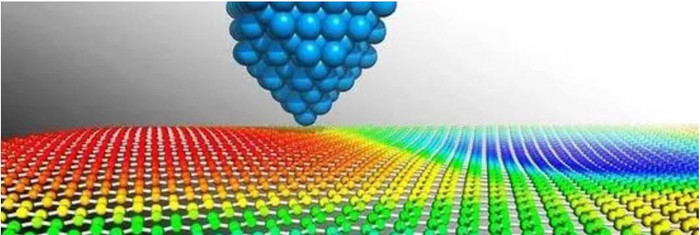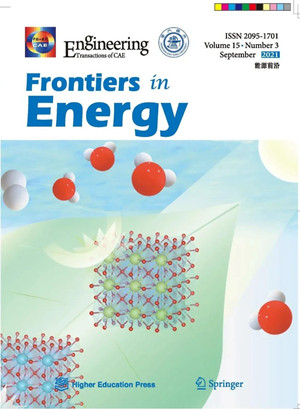特刊:超材料能源器件
Metamaterial devices for energy applications

Guest Editor Team
Prof. Changying Zhao(赵长颖), School of Mechanical Engineering, Shanghai Jiao Tong University, e-mail: changying.zhao@sjtu.edu.cn;
Prof. Ronggui Yang(杨荣贵), School of Energy and Power Engineering, Huazhong University of Science and Technology, e-mail: ronggui@hust.edu.cn;
Prof. Jiping Huang(黄吉平), Department of Physics, Fudan University, e-mail: jphuang@fudan.edu.cn;
Prof. Sheng Shen(申盛), Department of Mechanical Engineering, Carnegie Mellon University, e-mail: shengshe@andrew.cmu.edu;
Dr. Boxiang Wang(王博翔), School of Mechanical Engineering, Shanghai Jiao Tong University, e-mail: wangboxiang@sjtu.edu.cn.
Metamaterials are artificial structures which are engineered to achieve new and unusual physical properties, including negative refraction, invisible cloaking, ultralow thermal conductivity and negative mass density, among many others. Thanks to these thermal, optical and mechanical properties not typically found in nature, they are promising building blocks for developing novel devices and systems that can break the limit of energy transport, conversion, and storage in natural materials. For example, wavelength-selective thermal emitters based on judiciously designed metamaterials can significantly overperform blackbody or other conventional thermal emitters for the application of solar thermophotovoltaics, leading to a high conversion efficiency that may exceed the Shockley-Queisser limit.
Currently, many researchers are developing metamaterial-based devices for energy applications, giving rise to a very active interdisciplinary research field, covering both fundamental theories and practical implementations. These efforts have significantly broadened the understanding of the interaction of electrons, photons, phonons, and other microscopic energy carriers with metamaterials, and provided new strategies for achieving exotic physical properties that can push the limit of energy utilization and render new breakthroughs. Meanwhile, many studies have been conducted focusing on the design and fabrication of metamaterials and devices, aiming to develop a practical route for high-accuracy and scalable manufacturing. Advanced characterization methods have also been developed to experimentally access the exotic physical properties of metamaterial devices in an ultrafast and high spatial resolution fashion. In addition, the integration of metamaterial devices with practical energy systems in real world is of particular interest and importance.
Despite the rapid development in this field, there are still critical challenges to be addressed. First, simultaneously manipulating the transport of different energy carriers in a synergetic way using simple nanostructured metamaterials still remains a challenge, which is vital for many applications like thermoelectrics and multicalorics. In addition, high-throughput and low-cost manufacturing methods for metamaterial devices are in an urgent need for achieving large-scale and high-power energy applications. Moreover, it is quite necessary to develop in-situ experimental characterization techniques with nanoscale resolution for thermal, optical, electronic, and other physical properties of metamaterial devices at work, which are expected to significantly accelerate the R&D process. Furthermore, practical considerations for metamaterial devices in real systems, like durability, stability and compatibility, should be more intensively investigated.
In order to address these challenges, this special issue aims to provide a platform for researchers in this field to share and exchange their outstanding research outcomes so that valuable insights can be obtained for pushing the limit of energy utilization using metamaterials and promoting practical applications. Authors are invited to submit their papers to present their innovative perspectives, insightful theoretical analysis and designs, original experimental investigations, and comprehensive reviews for realizing high-performance metamaterial devices for energy applications.
Topic areas
The Editorial Team welcomes original research articles and review papers include, but are not restricted to the following topics:
> Transport of photon, phonon, electron, and other energy carriers in metamaterials> Multicalorics (electro-, magneto, baro- calorics)
Tentative schedule
> Prospective authors are expected to submit their ‘peer-review ready’ manuscript via the ScholarOne system (https://mc.manuscriptcentral.com/fie) before April 1, 2022.> The Special Issue is expected to be published by the end of June or early July in 2022.

Frontiers in Energy (SCI,2020 IF 2.709))于2007年创刊,是全英文能源领域综合性学术期刊。主编是翁史烈院士、倪维斗院士、苏义脑院士和彭苏萍院士。执行主编是上海交通大学黄震院士。出版能源领域原创研究论文、综述、科学快报、专题论文等。特别关注可再生能源、未来能源、超常规能源、2030能源、微/纳米能源、能源与环境等全球能源的重大挑战问题。
涉及领域包括(不限于):先进的能源材料,储能与应用,氢能与燃料电池,CO2 捕集、封存和利用,太阳能和光伏系统,生物燃料和生物能源,地热能,风能,地热能,潮汐能,核能,传热传质技术,能源与环境,建筑节能及能源经济政策等。
> 国际化的编委会队伍,海外编委约占37%
> 国际化的投审稿平台
> 高度重视学术质量,严格同行评议
> 不限文章长度,无版面费,免费语言润色
> 在线优先出版,论文快速进入SCI数据库。
> 高等教育出版社出版,Springer公司海外发行
在线浏览
http://journal.hep.com.cn/fie(国内免费开放)
https://link.springer.com/journal/11708
在线投稿
https://mc.manuscriptcentral.com/fie
联系我们
刘瑞芹:rqliu@sjtu.edu.cn, (86) 21-62933795
乔晓艳:qiaoxy@hep.com.cn, (86) 10-58556482

来源: FIE能源前沿期刊